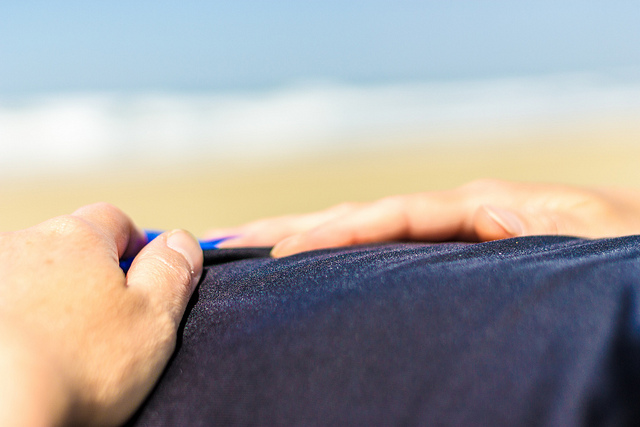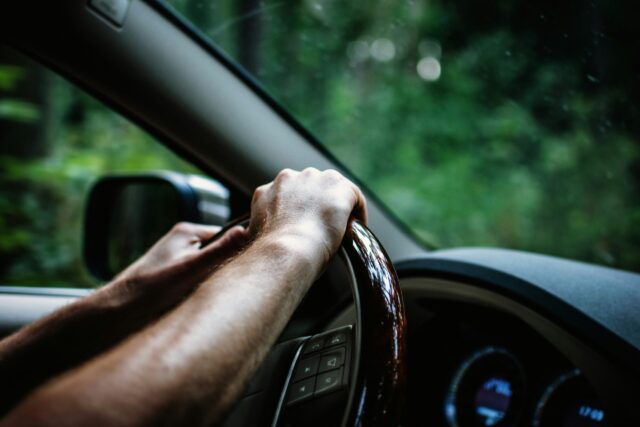How to Reduce Anxiety by Using Your Body as a Tool
By: Other | June 29, 2018

Written by Paul Paris, Ph.D.
Anxiety, as an emotion, urges us toward fight or flight behaviors like running away or freezing. Anxiety can mobilize our bodies and mind toward immediate action in response to an accurately perceived danger or threat in the environment. Research on anxiety shows that all of us need a “healthy” level of anxiety for us to perform well on tasks, such as taking an important test or giving a speech. In fact, moderate levels of anxiety correlate with optimum performance in such situations.
Anxiety, however, can become problematic when it climbs to high levels either in performance situations or in fight-or-flight response where the threat is perceived to be greater than it actually is. This anxiety can worsen when the person feels they don’t have the resources to address the threat. In fact, anxiety issues are the most common emotional problem for individuals in the United States.
Problematic anxiety can prevent us from engaging in activities that are important to us. It can be exhausting, distressing, and discouraging when having to deal with it frequently. It can escalate into panic with corresponding escalation of physiological responses.
High anxiety is often marked by difficulty in thinking clearly. The body and mind, being mobilized to avoid danger, devote their resources toward this drive so much that rational thought is minimized. This dynamic requires body-based techniques to help reduce the high anxiety state.
Body-based techniques are effective as a first option. Why? Because they take little mental effort and allow the body to send messages to the brain to relax and feel content. Such bodily messages are incompatible with the anxiety response. Anxiety decreases as a result.
The following techniques can help to reduce or cope with high levels of anxiety:
Progressive Muscle Relaxation (PMR)
A common body-based anxiety reduction technique, PMR takes only 5-10 minutes. It involves a mental scan of the body from head to toe, gradually tensing and relaxing muscle groups as the person scans up or down the body. This technique is most effective when the anxiety episode is less than acute because it trains the body to relax in general. It increases insight into the tension of the moment, enabling the person to attune to the anxiety and relax its tension more effectively. It is even more effective when practiced regularly, daily or several times per Many find the technique useful while going to sleep at night. Free scripts and guided exercises can be found online.
Diaphragmatic Breathing or Breathing Retraining
Another technique for anxiety reduction, breathing retraining involves regular practice requiring attentive, willful breathing that is slow and sustained from the lower belly. It takes about 1-2 minutes at a time. Most of us reflexively breathe in a shallower manner through our chest. This, however, can heighten the risk of anxiety or cause anxiety to worsen. By slowly inhaling, holding for a few seconds, and slowly exhaling through the abdomen, we can more fully engage our relaxation response though deeper breathing. It may be helpful to place one hand on your chest and on your stomach. When done correctly, the hand on your stomach should move, not the hand on your chest. This practice is more effective when used outside of an acute anxiety episode and is most effective when practiced daily. The principle is to train the body to be more relaxed in general by engaging in respiration that induces the relaxation response in the body. One caveat: sometimes people can find breath-based work more anxiety provoking, so it’s not for everyone.
Grounding Exercise
This exercise can help when anxiety increases or when anxiety escalates into panic The technique involves feeling the weight of gravity on your body as it anchors you into the present moment. A variation is to imagine your body as an empty vessel. Your lungs and breathing are intact. You imagine soft sand as it slowly, gently fills your body through the crown of your head down to the tip of your toes and up the body. A variation of grounding includes feeling the weight of your body parts, such as your back and thighs against the cushion of a chair. Another grounding variation is imagining a gravity field above you while it gently weighs you down comfortably into your surroundings. Based on DBT techniques, engaging in a half-smile and upturning the palms of your hands can also help send messages to the brain to feel contented. Closing your eyes during this exercise is helpful as well, by sending messages to the brain to relax.
Body-Focused Mindfulness
One of the simplest of the body-based techniques for anxiety, this practice can be effective either in the anxiety moment itself, or as a daily practice. It can be done 1-2 minutes outside of an anxiety episode. The goal is to use the body to anchor yourself into the present moment by focusing on a part of the body unrelated to your anxiety response and not in discomfort. Feet are good parts of the body to try this technique. Simply turn your attention gently to that body area and experience the physical sensations in the here and now. Perhaps feel the floor under your feet or feel the shoes as they surround your If other thoughts, feelings or attention drifts away, simply notice that shift and gently bring your awareness back to the physical sensations.
Problematic anxiety can be very uncomfortable. These body-based techniques can help reduce and cope with anxiety to reduce suffering and improve quality of life. Another caveat: if you have medical conditions such as asthma or concerns about your physical health or ability to engage in these exercises, always consult with your medical doctor before trying them. I recommend consulting with your therapist first before trying them as well.
Potential exists for you to use your body as a tool to decrease unhelpful anxiety.
Image: eFlate on flickr and reproduced under Creative Commons 2.0



